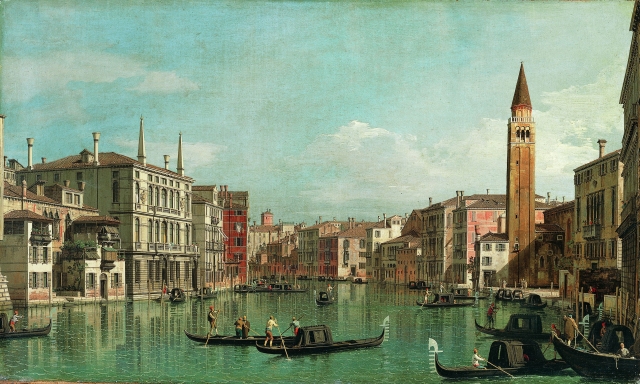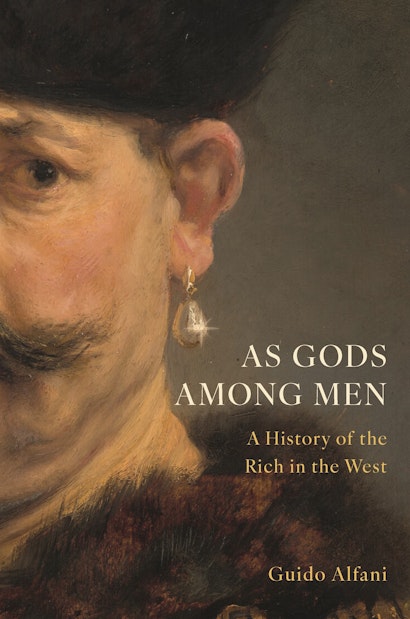When I first discussed with family, friends and colleagues my project of writing a book on the history of the rich, I received some comments that gave me pause, and that finally led me to write the book exactly as I did. One such comment (first voiced by my wife) is that whatever their real intentions, across history the rich have achieved plenty of things from which we continue to benefit. Consider the city of Venice: we could not enjoy, in the way that we can today, sailing along the Canal Grande if generations of very wealthy patricians had not invested their money in building magnificent palaces along its banks. Surely, they did it for their own benefit, and to bolster their social status—in plainer words, to show off and to impress their fellow patricians—but the fact remains that we benefit aesthetically from their efforts. And the rich did not only build palaces and villas, they also established charities, endowed monasteries and other religious institutions, founded libraries and universities, and were patrons of the arts: all things from which, often, we also benefit.
The argument is solid (my wife is a very smart woman), but it invites further reflection and analysis. This is why my new book, As Gods Among Men: A History of the Rich in the West, dedicates an entire chapter to the activity of the rich as patrons, benefactors and donors.
Let us begin by saying that our ancestors had very clear ideas about the varying nature and motivation of the deeds accomplished by the rich. On the one side, there was charity broadly intended. The medieval rich, even the most selfish ones, had a very pressing reason to be charitable: in their times, Christian theology was unequivocal in condemning the accumulation of wealth as avarice, a deadly sin. Many among the medieval rich were genuinely worried about the afterlife, which is why they tried to atone for their sins by doing good deeds such as providing, in their wills, substantial bequests to charities and to religious institutions. Some went further: consider the case of Francesco di Marco Datini, one of the greatest merchants of the fourteenth century, who destined most of his fortune to the foundation of a hospital for the poor, the Casa del Ceppo dei poveri, in his native city of Prato in Tuscany (this institution is still in operation and pursuing objectives in line with the will of the founder after more than six centuries). Datini was an innovator in charity, as another part of his bequeathed fortune was destined to the establishment of the Spedale degli Innocenti in Florence, the first specialized orphanage for abandoned children in Europe.
Francesco di Marco Datini’s charitable institutions were built only after his death, so there is no reason to think that he hoped to get any benefits from them beyond the spiritual ones. But other cases are not that simple. Take another Tuscan, Cosimo de’ Medici, born about 50 years after Datini and who was very much a man of the fifteenth century—a very different social and cultural context as far as the rich were concerned. In fact, by the early fifteenth century in the most economically advanced areas of Europe, such as central and northern Italy, the rich had become so wealthy and so numerous that they could no longer be dismissed as sinners, and their presence within the community as an anomaly. It followed that they had to be assigned a role to play in society. Arguably, the main social function assigned to the rich from the end of the Middle Ages was to act as private reserves of money in which the community could tap in times of crisis—an aspect that I discuss further in another chapter of the book, as well as in a guest essay in The New York Times. But there was a second, and related, function, which is very clearly explained (based on the case of Cosimo de’ Medici) by the Neapolitan humanist, Giovanni Pontano, in a treaty published in 1498:
In our age Cosimo the Florentine imitated the ancient magnificence both in building churches and villas, and in founding libraries; not only did he imitate, but, I would say, he was the first to revive the custom of changing private wealth into public benefit and into an ornament of the fatherland. Not a few men, although less advantaged than he, now seek to follow this custom.
According to Pontano, both by establishing charities and by building villas for his private use, Cosimo was using his wealth to the public benefit, because he was making the whole city splendid to everyone’s advantage. And Pontano knew exactly how to call this aspect of the activity of the rich: magnificence, a word coming from Antiquity and which means “doing great deeds”. In the classical tradition to which Pontano refers to, being magnificent also had political implications. As clarified in the fourth century BCE by the Athenian philosopher Plato in his treaty The Republic, magnificence is one of the key virtues that should be possessed by the philosopher-king. Consequently, it was understood that magnificence was a quality shown by individuals who also had an ambition to rule, or at least to lead, their societies. Later, at the time of the Roman Empire, magnificence, that is an ability and a willingness to do (and to pay for) great deeds, continued to be important for building a public career: consider another Athenian, Herodes Atticus (101–77 ce), scion of an immensely wealthy family who rose to consular status in Rome—but only after having distinguished himself as the patron of many public works (theatres, baths, aqueducts and so on) in Italy and in Greece, including a radical renovation of the Panathenaic Stadium in Athens, rebuilt in marble and expanded to a capacity of 50,000 seats.
So, was Cosimo de’ Medici truly magnificent? Sure he was, as testified for by the splendid buildings that he had erected in Florence and its surroundings (many of which survive to this day, to the delight of cohorts of tourists), and by his extensive cultural and artistic patronage. But when, in the 1440s, Cosimo founded the Medici Library at the Dominican Convent of San Marco, his fellow citizens were well aware that he was doing it to bolster his role as de facto ruler of Florence, although the library itself was most definitely for public benefit.
Westerners today are perhaps less able than their ancestors to clearly detect the nature of what, in modern parlance, is often called “giving”. Today magnificence as a category of the behaviour of the super-rich tends to be interpreted as “munificence”, that is, as generosity (some might call it philanthropy, a concept that emerged during the late eighteenth century and which explicitly implies that nothing is expected in return, even simple influence or an increase in status). But if magnificence becomes confused with munificence, the aspect of the dependency of society on the rich, together with their claim to have a right to rule, implicit in their socially useful spending, becomes lost. This is not to say that each and every act of generosity on the part of the rich is driven, consciously or unconsciously, by self-interest and by a desire to exert a degree of control over society, but that those acts that do have this motivation have become more difficult to distinguish in modern societies, compared to earlier epochs. Today, many billionaires donate generously and are invariably praised highly for their munificence, but how much influence on society and on politics do they gain in this way? And what do they use it for—maybe, to contrast policies that go against their own interests, such as for example more progressive taxation? These questions are worth asking, and give us reason to reflect upon the social role that the rich play (or are supposed to play, but really don’t anymore) in our societies, a role which we can better distinguish by looking at it in the mirror of history.
Guido Alfani is professor of economic history at Bocconi University, Milan. He is the author of Calamities and the Economy in Renaissance Italy: The Grand Tour of the Horsemen of the Apocalypse and the coauthor of The Lion’s Share: Inequality and the Rise of the Fiscal State in Preindustrial Europe.

